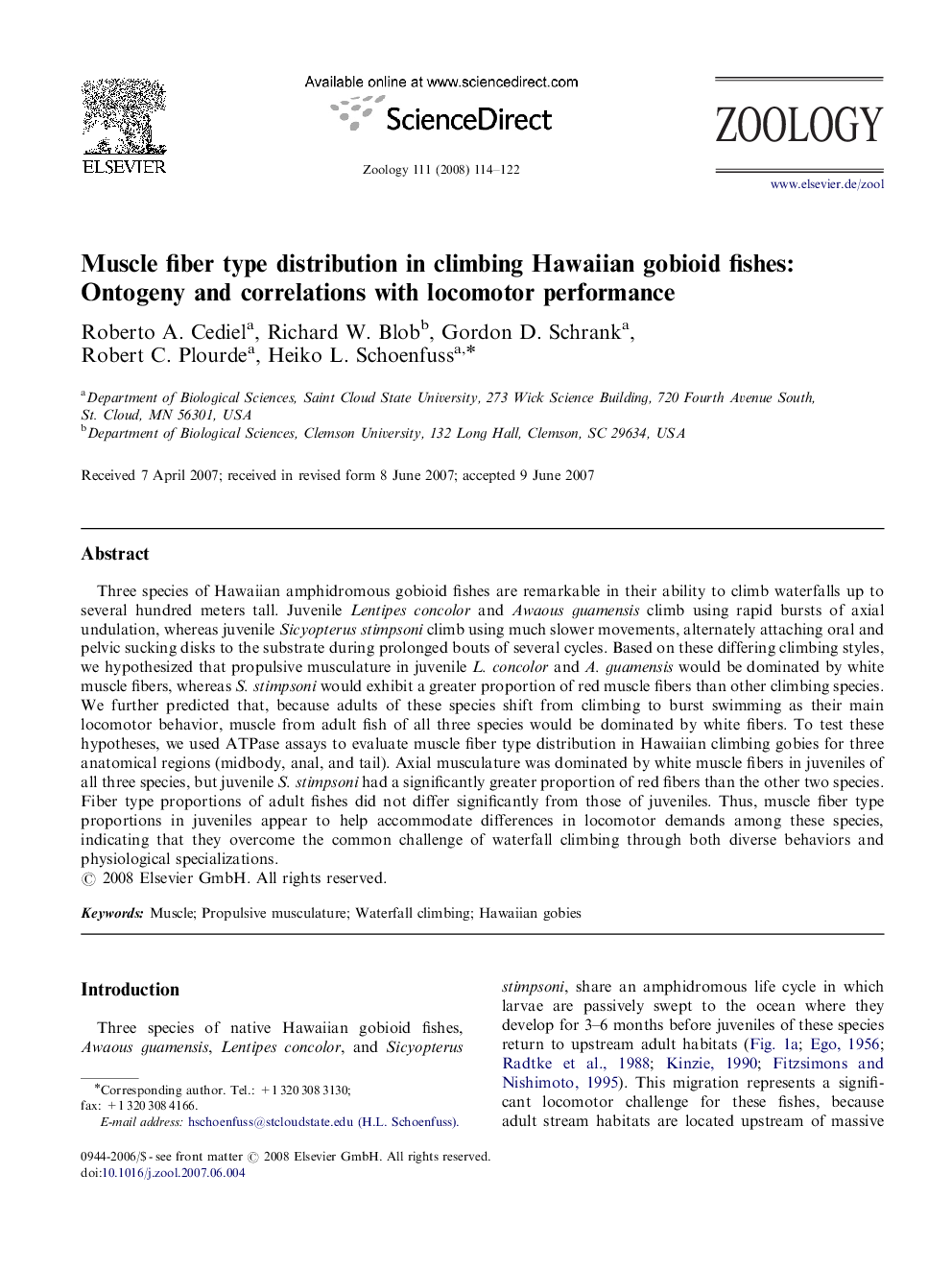| Article ID | Journal | Published Year | Pages | File Type |
|---|---|---|---|---|
| 2791425 | Zoology | 2008 | 9 Pages |
Abstract
Three species of Hawaiian amphidromous gobioid fishes are remarkable in their ability to climb waterfalls up to several hundred meters tall. Juvenile Lentipes concolor and Awaous guamensis climb using rapid bursts of axial undulation, whereas juvenile Sicyopterus stimpsoni climb using much slower movements, alternately attaching oral and pelvic sucking disks to the substrate during prolonged bouts of several cycles. Based on these differing climbing styles, we hypothesized that propulsive musculature in juvenile L. concolor and A. guamensis would be dominated by white muscle fibers, whereas S. stimpsoni would exhibit a greater proportion of red muscle fibers than other climbing species. We further predicted that, because adults of these species shift from climbing to burst swimming as their main locomotor behavior, muscle from adult fish of all three species would be dominated by white fibers. To test these hypotheses, we used ATPase assays to evaluate muscle fiber type distribution in Hawaiian climbing gobies for three anatomical regions (midbody, anal, and tail). Axial musculature was dominated by white muscle fibers in juveniles of all three species, but juvenile S. stimpsoni had a significantly greater proportion of red fibers than the other two species. Fiber type proportions of adult fishes did not differ significantly from those of juveniles. Thus, muscle fiber type proportions in juveniles appear to help accommodate differences in locomotor demands among these species, indicating that they overcome the common challenge of waterfall climbing through both diverse behaviors and physiological specializations.
Keywords
Related Topics
Life Sciences
Agricultural and Biological Sciences
Animal Science and Zoology
Authors
Roberto A. Cediel, Richard W. Blob, Gordon D. Schrank, Robert C. Plourde, Heiko L. Schoenfuss,
